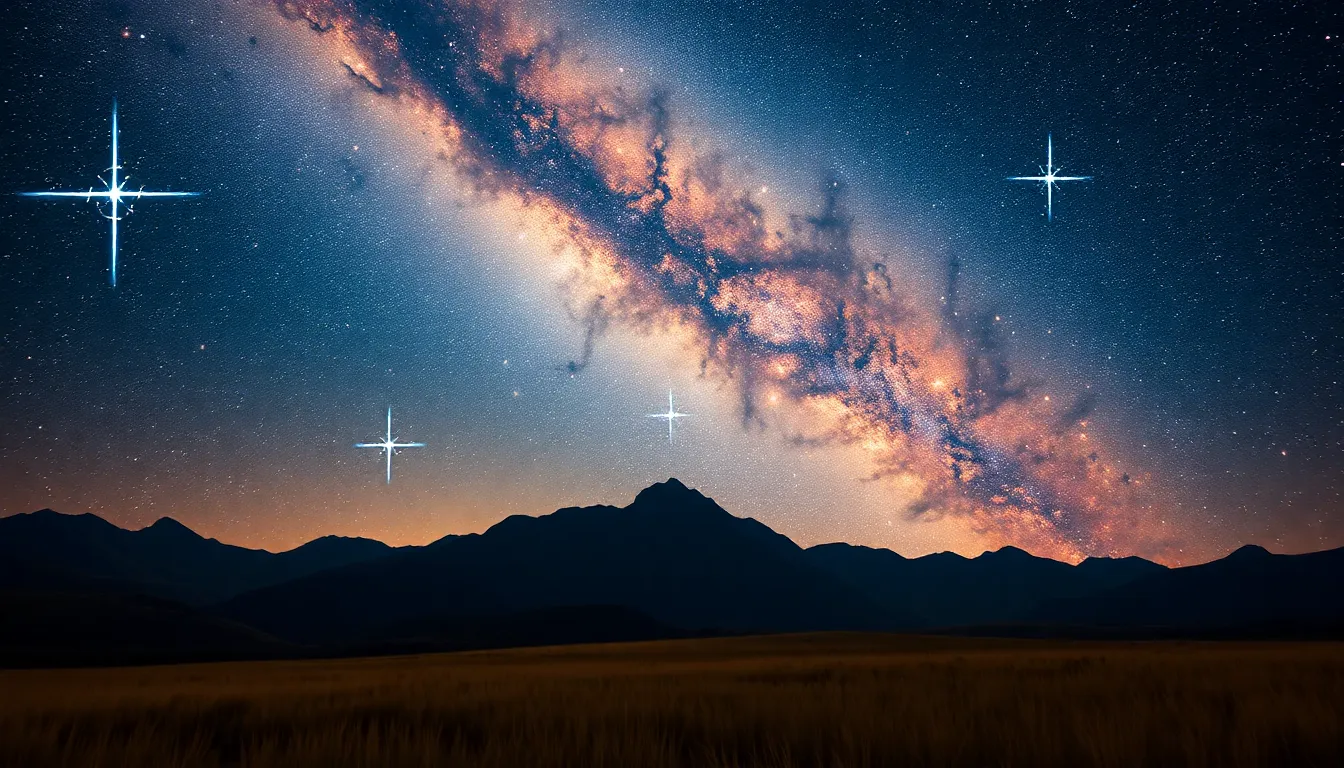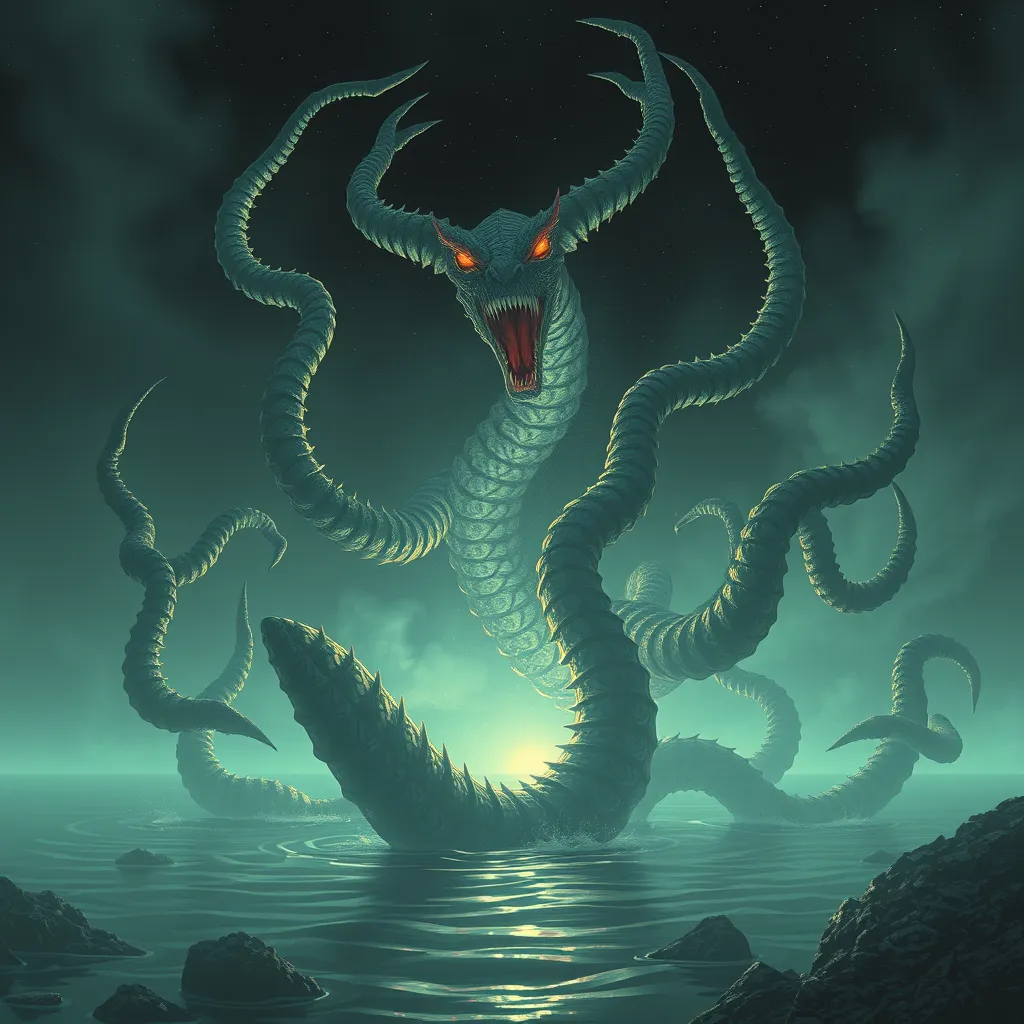Beyond the Heavens: Exploring the Mythical Realms of the Stars
I. Introduction
Mythical realms in star lore refer to the rich tapestry of stories, beliefs, and interpretations that various cultures have associated with the stars. These narratives often serve to explain the cosmos, human existence, and the mysteries of life and death.
The importance of stars in mythology transcends geographical boundaries, as they have played a crucial role in shaping the beliefs and practices of civilizations throughout history. From guiding ancient mariners to inspiring poets and artists, stars have been a source of wonder and reverence.
This article will delve into the mythical realms of the stars, exploring ancient civilizations’ celestial myths, the role of stars in navigation, their symbolism, artistic representations, the evolution of star myths in modern society, and the future of these narratives.
II. Ancient Civilizations and Their Celestial Myths
A. Egyptian Star Myths and the Afterlife
The ancient Egyptians viewed the stars as gateways to the afterlife. The constellation Orion was associated with Osiris, the god of the afterlife, while the Milky Way was seen as the path to the heavens. The Egyptians constructed pyramids aligned with the stars, reflecting their belief in the importance of celestial navigation in the journey to the next world.
B. Greek Mythology: The Constellations and Their Stories
Greek mythology is rich with stories about the constellations. Each constellation has its own myth and significance:
- Orion: The great hunter, often depicted battling Taurus the bull.
- Andromeda: The princess saved by Perseus, representing themes of sacrifice and heroism.
- Ursa Major and Ursa Minor: The great and little bears, linked to stories of transformation and love.
C. Mesopotamian Contributions to Star Lore
The Mesopotamians were among the first to systematically study the stars, creating one of the earliest forms of astronomy. They associated various celestial bodies with their gods and goddesses. For instance, the planet Venus was linked to the goddess Ishtar, symbolizing love and war. Their star maps guided agricultural practices and religious festivals.
III. The Role of Stars in Navigation and Exploration
A. Historical Significance of Celestial Navigation
Before the advent of modern navigation tools, sailors relied heavily on the stars for guidance. The North Star, Polaris, has been a critical navigational aid for centuries due to its fixed position in the northern sky.
B. Myths Surrounding Famous Navigators and Their Star Maps
Many cultures have legends about great navigators who followed the stars. For example, Polynesian navigators utilized the stars, ocean swells, and bird patterns to explore vast distances across the Pacific. Their myths recount the exploits of ancestral voyagers who discovered new lands guided by celestial bodies.
C. The Influence of Stars on Trade Routes and Exploration
Stars influenced not only navigation but also trade routes. The maritime silk road, for instance, was guided by the stars, leading to the exchange of goods and culture among distant civilizations. The connection between stars and trade is a testament to their enduring significance in human history.
IV. The Symbolism of Stars in Different Cultures
A. Stars as Symbols of Hope and Guidance
Throughout history, stars have been seen as symbols of hope and guidance. Many cultures equate stars with wishes, believing that when a star falls, it brings good fortune. This belief is prevalent in traditions around the world, from the wishing upon a star in Western cultures to the significance of stars in indigenous beliefs.
B. The Role of Stars in Religious and Spiritual Beliefs
Stars have played a pivotal role in various religious and spiritual beliefs. In Christianity, the Star of Bethlehem is a symbol of divine guidance. In Hinduism, the stars are associated with the gods and are used in astrology to determine auspicious times for rituals.
C. Stars in Folklore: Tales of Creation and Destiny
Many folktales involve stars as central figures in creation myths. For instance, some Native American tribes believe that the stars are the souls of ancestors watching over the living, while others recount stories of how the constellations were formed from the actions of mythical beings.
V. Artistic Representations of Star Myths
A. Literature: Mythical Narratives and Star References
Stars have inspired countless literary works. From ancient epics to modern novels, authors often use celestial imagery to convey themes of love, loss, and destiny. Notable examples include:
- Homer’s “Iliad”: References to constellations as a means of navigation.
- Shakespeare: Frequent allusions to stars in his plays to symbolize fate.
B. Visual Arts: Depictions of Celestial Beings
In visual arts, stars have been depicted in various forms, from ancient pottery adorned with celestial motifs to modern paintings exploring the cosmos. Artists like Vincent van Gogh, in “Starry Night,” highlight the emotional and spiritual connection humans have with the night sky.
C. Music and Performance: Stars in Cultural Expressions
Stars also find their place in music and performance. Many songs celebrate the beauty of the stars or use them as metaphors for love and longing. Traditional dances and theatrical performances often incorporate star lore, reflecting the cultural significance of celestial bodies.
VI. The Evolution of Star Myths in Modern Society
A. Contemporary Interpretations of Ancient Myths
As society evolves, so do interpretations of ancient star myths. Modern storytelling often reimagines these tales, blending old beliefs with contemporary themes, thus keeping the spirit of the myths alive.
B. The Influence of Astronomy and Science on Mythology
With advancements in astronomy, scientific discoveries have reshaped our understanding of the stars. This intersection of science and mythology leads to new narratives that honor both the old and the new.
C. Stars in Popular Culture: Films, Books, and Media
Stars continue to capture the imagination in popular culture. Movies, books, and other media often draw upon celestial themes, exploring the wonders of the universe and humanity’s place within it. Notable examples include:
- Interstellar: A film that intertwines space exploration with human emotion.
- Star Trek: A franchise that delves into the exploration of new worlds and the cosmos.
VII. The Future of Star Myths
A. New Discoveries in Astronomy and Their Mythical Implications
As astronomers continue to make groundbreaking discoveries, new celestial phenomena may inspire fresh myths and interpretations. The discovery of exoplanets, for instance, raises questions about life beyond Earth and our place in the universe.
B. The Role of Technology in Shaping New Star Narratives
Technology, such as virtual reality and augmented reality, allows for immersive experiences that can bring new star narratives to life. These advancements may help future generations connect with the stars in ways previously unimaginable.
C. Preserving Cultural Myths in a Globalized World
In a rapidly globalizing world, preserving cultural myths related to the stars becomes essential. Efforts to document and share these stories can foster appreciation for diverse perspectives and ensure that the wisdom of ancient civilizations continues to resonate.
VIII. Conclusion
The significance of stars in mythology is profound, weaving through the fabric of human experience across cultures and time. From guiding ancient navigators to inspiring modern artists, celestial myths continue to shape our understanding of the universe.
As we explore the mysteries of the cosmos, we are reminded of the enduring impact that stars have on our lives. They are not merely points of light in the sky, but symbols of hope, guidance,




